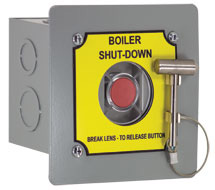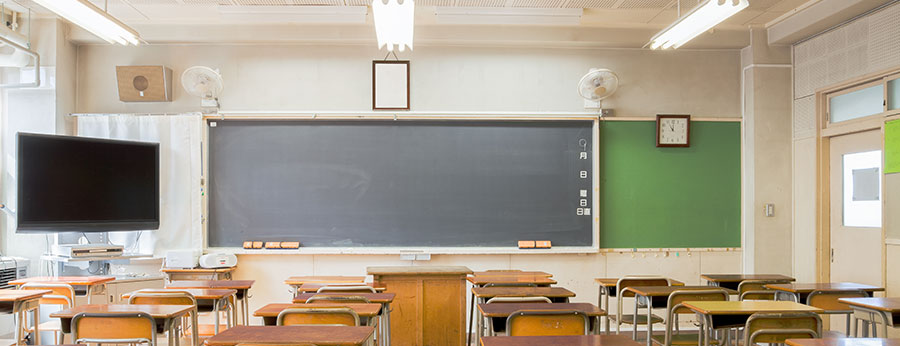Facility managers need to ensure sensors are running efficiently and smoothly to improve and maintain IAQ to slow the transmission of viruses through the HVAC system.
Some of the most critical sensors used in HVAC systems are:
Pressure Sensors
Pressure sensors monitor pressure levels within specific zones, and measure the pressure drop across filters and other devices, effectively alerting the system when maintenance and filter replacement is required. Accurate pressure measurement is vital for optimal HVAC system performance. Pressure sensors can measure extremely high and low pressures in air and water applications, offering precise measurement of pressure, differential pressure, and velocity for reliable monitoring. Applications include VAV (variable air volume) control, static duct pressure, clogged HVAC filter detection, HVAC transmitters, and IAQ monitoring systems. Pressure sensors from Belimo offer eight field-selectable pressure ranges in one unit. They have excellent zero-point stability and high accuracy with an auto-zero function that manually calibrates itself every ten minutes.
Temperature Sensors
Temperature sensors measure air and water temperature and adjust the heating and air conditioning to raise or lower the air temperature based on the programmed setpoint, preventing wasted energy. You can also use the sensors’ data to learn about a room’s airflow and air quality. Using temperature sensors prevents the system from running harder than the building requires. Accurate and reliable temperature readings are essential for optimal building comfort and energy efficiency. Belimo’s outdoor air, duct, pipe, and room temperature sensors are designed for easy installation and are compatible with all BAS.
Humidity Sensors
Controlling humidity in buildings is critical for occupant comfort, safety, and protecting building infrastructure, production processes, stored goods, and museum artwork. Combined temperature and humidity sensors provide a flexible and cost-effective solution. Humidity control typically adds clean steam to the airstream to raise space humidity. If using resistive-type humidity and dew point sensors, consider changing to capacitive technology (CMOS) sensors, which are more accurate and not susceptible to drift. The updated ASHRAE 62.1 standard also
requires systems to limit the indoor humidity to a maximum dew point of 60°F (15°C) during both occupied and unoccupied hours whenever the outdoor air dew point is above 60°F (15°C). Belimo’s range of durable duct, outdoor air, and room sensors is manufactured using the highest quality materials to ensure superior reliability, accuracy, and repeatability. Belimo’s combined temperature and humidity sensors include field-selectable ranges and outputs, including relative humidity, absolute humidity, enthalpy, and dew point, helping buildings meet ASHRAE 62.1 standard. Combined sensors provide a flexible and cost-effective solution.
Indoor Air Quality Sensors
Sensors that measure IAQ are becoming increasingly important to slow the transmission of viruses via the HVAC system. With the new ASHRAE guidance codes, HVAC systems’ operation is critical for maintaining adequate and safe IAQ in reopening buildings. Strategies such as increased ventilation, improved filtration, and air cleaning aim to enhance occupant safety, comfort, and productivity. Air quality sensors provide occupant comfort and safety while helping to maximize efficiency. Belimo offers a wide range of combined multi-sensors for CO2, humidity, temperature, and VOCs designed to ensure air quality and maximize energy savings over the building’s life cycle.
Occupancy Sensors
Indoor occupancy sensors measure motion and light in spaces to optimize energy efficiency. Seamless integration to the building management system (BMS) allows energy savings by controlling the space temperature to an unoccupied setpoint. Occupancy sensors can detect ambient brightness levels, enabling the BMS to control powered light levels in the space. These sensors are typically in high-traffic or isolated areas, such as the building entrance, hallways, lavatories, floor, office rooms, etc. Belimo’s occupancy sensors are designed to be discreet. The ceiling-mounted 360° passive infrared occupancy sensor with relay output seamlessly integrates to the BMS, allowing energy savings by controlling the space temperature to the unoccupied setpoint.
Room Sensors
Room Sensors monitor motion and share data on occupancy activity patterns and environmental changes in temperature, humidity, and CO2. This data is invaluable in running an environmentally friendly office, ensuring occupant comfort and safety with increased production. Belimo room sensors in a surface-mounted, streamline design measure temperature, humidity, and CO2, providing high accuracy with a fast response rate. Integrated with Near Field Communication (NFC), room sensors allow easy data access, device configuration, commissioning, and troubleshooting when using the Belimo Assistant App installed on a smartphone.
Kele offers a wide range of Belimo sensors you need to get your next project done. Shop now or find out more on how Kele can help you with all of your sensor needs. Call or Chat Live with us today!








